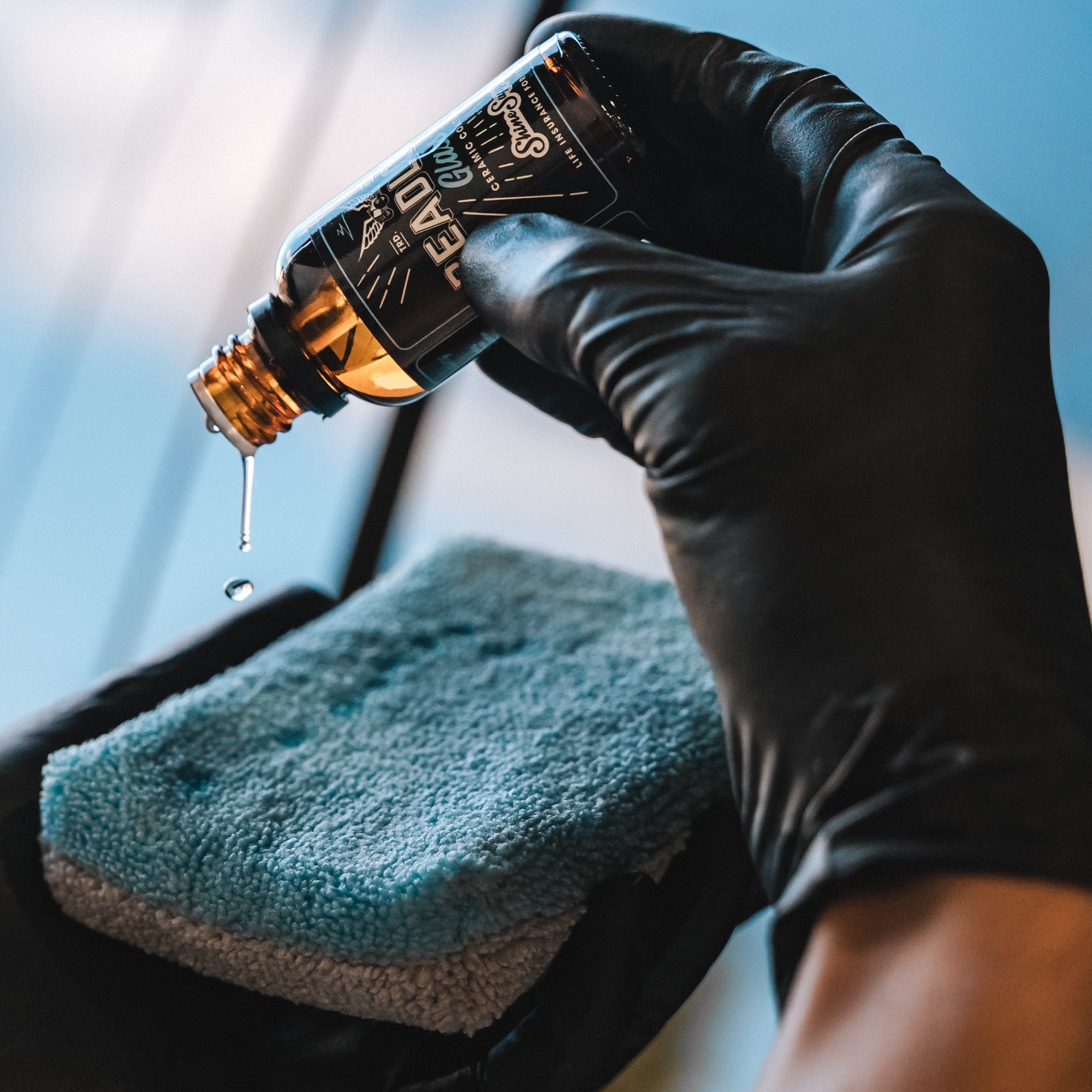Why Ceramic Coating Is Vital for Keeping Your Automobile Looking New
Why Ceramic Coating Is Vital for Keeping Your Automobile Looking New
Blog Article
Checking Out the Scientific Research Behind Ceramic Covering and Its Influence On Cars And Truck Detailing
The application of ceramic covering in vehicle outlining represents a significant development in automotive care, rooted in its innovative chemical properties, primarily silica dioxide and titanium dioxide. As we discover the ins and outs of the application procedure and the long-term ramifications for lorry upkeep, it comes to be clear that the choice of ceramic finish can fundamentally alter one's technique to auto treatment.
What Is Ceramic Layer?
Ceramic layer is a modern option that has gained popularity in the auto detailing sector for its ability to give lasting defense for car surface areas. This advanced protective layer is generally composed of silica dioxide (SiO2), which develops a solid bond with the car's paint, developing a durable shield versus environmental pollutants. Unlike typical wax or sealants, ceramic finishes supply exceptional resistance to UV rays, chemical discolorations, and physical abrasions.
The application of ceramic covering includes a thorough process, where the automobile's surface area is thoroughly cleaned up and sanitized prior to the covering is used (Ceramic Coating). Once treated, the finish boosts the vehicle's gloss, depth, and clearness, giving a showroom-quality finish that lasts for many years. Among the key advantages of ceramic layer is its hydrophobic properties, which ward off water and dust, making upkeep easier and reducing the frequency of laundries
The Chemistry of Ceramic Finish
A fundamental aspect of ceramic finish hinges on its chemical make-up, primarily characterized by the presence of silica dioxide (SiO2) This compound is essential to the formation of a resilient, protective layer that bonds chemically to the car's surface area. When applied, the SiO2 molecules undergo a procedure called polymerization, in which they create a network of interconnected frameworks. This leads to a robust, hydrophobic surface that pushes back water and impurities.
In addition to SiO2, many ceramic coatings include titanium dioxide (TiO2) and various other additives to enhance their efficiency qualities. TiO2, for example, contributes to raised firmness and chemical resistance. The interaction between these compounds develops a special molecular framework that provides a high degree of security against environmental factors such as UV rays, acid rainfall, and oxidation.
Additionally, the application process typically entails a meticulous prep work of the surface area to guarantee optimum bond of the coating. This chemistry not just ensures a durable surface yet additionally improves the visual charm of the vehicle. Recognizing the elaborate chemistry behind ceramic layers is necessary for detailing experts that intend to offer exceptional security and durability for their clients' vehicles.
Advantages of Ceramic Coating
While outlining experts commonly highlight the benefits of ceramic layers, their benefits extend far past looks. Ceramic finishings create a hydrophobic surface area that pushes back dust, water, and crud, considerably lowering the regularity of washes and the initiative called for to keep a lorry's look.
Furthermore, ceramic finishings boost the long life of the vehicle's finish. Unlike traditional waxes or sealants, which may last a couple of months, ceramic finishes can sustain for many years, supplying a long-term remedy for car care. This longevity equates to set you back savings, as proprietors are much less most likely to need frequent reapplication.
Additionally, ceramic layers are resistant to chemical discolorations and etching, which can happen more from acidic materials like bird droppings or tree sap. This resistance not only preserves the vehicle's visual appeals but additionally decreases possible damage - Ceramic Coating. Overall, the financial investment in ceramic finishing offers auto owners a significant return in regards to protection, ease of upkeep, and long-lasting aesthetic appeal, making it a significantly popular option in the realm of vehicle detailing
Application Process Clarified

When the surface is adequately prepared, the ceramic layer can be applied. Using an applicator pad, the professional applies the coating in tiny sections, functioning in a crosshatch pattern to make sure even protection.
As soon as cured, the ceramic layer creates a strong bond with the paint, providing improved defense and a shiny finish. Appropriate application is necessary to make the most of the durability and performance of the ceramic coating.

Long-lasting Influence On Vehicle Treatment
The long-lasting effect of ceramic covering on vehicle treatment is considerable, as it fundamentally modifies exactly how owners maintain their vehicles. By developing a long lasting, hydrophobic layer on the car's surface area, ceramic finishes reduce the adherence Get More Information of dirt, crud, and pollutants. This residential or commercial property reduces the regularity of washing called for, ultimately conserving water and cleaning items.
Furthermore, the UV security provided by ceramic coverings helps to stop oxidation and fading of the automobile's paint, preserving its aesthetic allure and resale value with time - Ceramic Coating. This protective obstacle also minimizes the possibility of scrapes and swirl marks, which prevail problems in traditional paint surfaces
In addition, ceramic finishings facilitate simpler maintenance, enabling proprietors to clean their cars with marginal effort. The smooth surface area makes it challenging for pollutants to bond, making it possible for simpler elimination during regular cleansing.
Over time, the investment in ceramic layer may result in set you back financial savings in vehicle care products and solutions. On the whole, the enduring benefits of ceramic finishings not just improve the appearance of cars yet additionally add to a more lasting and reliable strategy to lorry maintenance.
Conclusion
In conclusion, the application of ceramic finish stands for a substantial advancement in vehicle outlining, driven by its special chemical structure of silica dioxide and titanium dioxide. This innovation not just improves the visual charm of lorries yet additionally gives durable defense versus environmental dangers and use. The long-lasting benefits, including reduced upkeep regularity and boosted resilience, underscore the value of ceramic coatings as an important investment for maintaining lorry look and stability in time.

Report this page